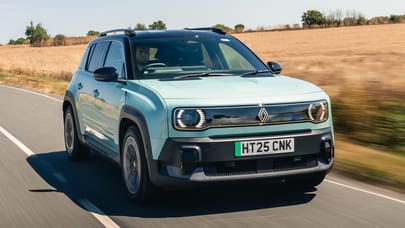
SPEC HIGHLIGHTS
- BHP
260bhp
- 0-62
6.5s
- CO2
220g/km
- Max Speed
155Mph
- Insurance
group42E
This week, we mostly want a turbo boost button in our car. A philosophy we didn’t anticipate sharing with Volvo, which has fitted an F1-style Kinetic Energy Recovery System (KERS) to an S60.
The Swedish company’s rationale is a bit different. It’s experimenting with alternatives to petrol-electric hybrid systems to increase fuel economy, and this is its mule. Up front, there’s the 254bhp 5cyl turbo petrol, while the rear gets a Flybrid flywheel KERS system powering the back axle, giving much boost.
It works like this: when you slow down, kinetic energy ordinarily converted into heat by the brakes is channelled to a flywheel, which spins up in a reinforced vacuum to a maximum of 60,000rpm. A clever Torotrack constantly variable transmission (CVT) reconverts the energy from the flywheel into drive.
It captures 150 watt hours in eight(ish) seconds of gentle braking – what you’d need to charge 25 iPhones – which you can either store for up to half an hour or use immediately, either as a gentle supplement to the combustion engine (cutting consumption by 25 per cent) or in one big lump (adding 80bhp).
The latter transforms it into a very un-Volvoey Volvo. Hit the boost button on the steering wheel, and it puts on speed with a headbutt. There’s a bit of rear-tyre scratching, then both axles settle into a cohesive gust of torque. Enough to improve our own 0–60mph sprint from 7.68secs to 6.07. Which, plainly, is insane.
More so when you consider the entire system only weighs 60kg, requires virtually no maintenance (save for a mid-life oil top-up) and lasts for as long as the car. The batteries alone weigh 300kg in the V60 Hybrid, and that system costs four times as much to produce.
That said, it does need polishing – some silencing here and crash-testing there. But a similar system has been used (and crashed) in F1 and LMP1, so safety is not a concern. And we’re told silencing is easy enough and wasn’t a priority for this mule.
Flybrid reckons it can have a road-legal system ready for 2017, and while it’s not in Volvo’s official product plan, engineers told TG that some form of KERS – likely with ‘overtake’ boost button – is “inevitable” after 2020. No surprise that the company’s new SPA platform is designed to accept the tech, then.
Top Gear
Newsletter
Thank you for subscribing to our newsletter. Look out for your regular round-up of news, reviews and offers in your inbox.
Get all the latest news, reviews and exclusives, direct to your inbox.
Featured

Trending this week
- Car Review
Porsche 911 GT3 (992.2)





